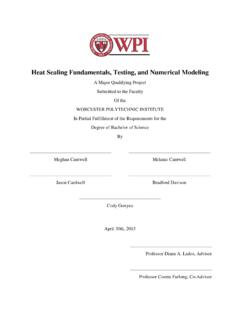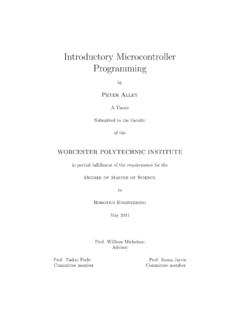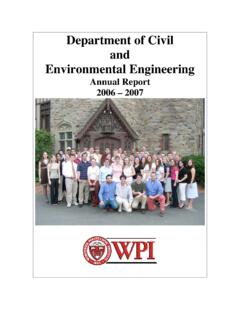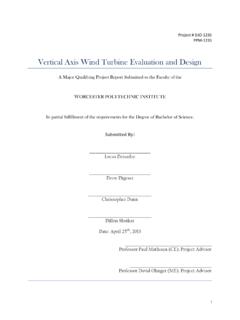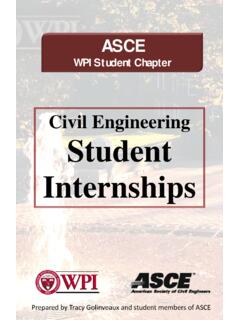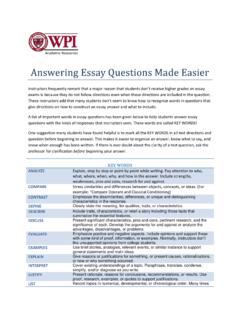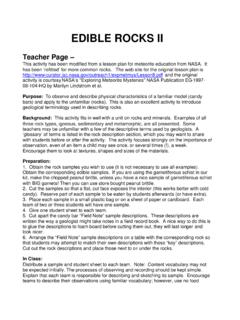Transcription of 3.F.3 Rock Candy: Solids, Liquids, Gases The creation of ...
1 Rock candy : Solids, Liquids, Gases The creation of sugar crystals: exploring evaporation , crystallization , and the metric system Grade Level 3 Sessions (2): 1 at 50-60 minutes, 1 at 50-80 minutes Seasonality None Instructional Mode(s) Whole Class, Small Groups Team Size 2 students WPS Benchmarks , , , , MA Frameworks , Key Words Condensation, crystallization , evaporation , Seeding Summary This lesson introduces children to the creation of sugar crystals, which occurs when water evaporates from a saturated sugar -water solution. Students will have the opportunity to explore the metric measuring system and will practice writing laboratory reports.
2 Students will experience evaporation first-hand and will learn that sugar dissolves in hot water. Learning Objectives 2002 Worcester Public Schools (WPS) Benchmarks for Grade 3 1. Describe different ways in which a problem can be represented, , sketches, diagrams, graphic organizers, and lists. 2. Develop a knowledge and understanding of the metric measurement system. 3. Compare and contrast solids, liquids, and Gases based on the basic properties of each of these states of matter. 4. Do simple investigations with evaporation , condensation, freezing and melting.
3 Confirm that water expands upon freezing. 5. Record data and communicate findings to others using graphs, charts, maps, models, oral and written reports. 2001 Massachusetts Frameworks for Grade 3 1. Describe different ways in which a problem can be represented, , sketches, diagrams, graphic organizers, and lists. 2. Describe how water can be changed from one state to another by adding or taking away heat. Additional Learning Objectives 1. Students will work with the metric system to measure volume and mass. 2. Students will discover that when sugar is added to cold water a mixture (water and undissolved sugar ) is formed; however, when sugar is added to hot water, a solution is formed (water and dissolved sugar ).
4 3. Students will apply their knowledge of evaporation and condensation. 4. Students will become familiar with writing a laboratory report. Required Background Knowledge 1. Basic knowledge of the properties of solids, liquids and solids. 2. Basic understanding of evaporation and condensation. 3. Basic knowledge of physical and chemical changes. 4. Basic knowledge of the metric system. Essential Questions 1. What is the difference between adding sugar to cold and hot water?
5 2. What happened to the sugar -water solution after seven days? 3. What is the phase of water after the water is evaporated? 4. What is the phase of the sugar after the water is evaporated? 5. What are the different parts of a laboratory report? Introduction / Motivation The instructor might begin the lesson by asking the students what they remember about the properties of solids, liquids and Gases . The instructor might then ask how many students have eaten rock candy and which flavor is their favorite. Procedure The Instructor will: Part 1: (50-80 minutes) 1.
6 Divide the students into pairs (optional). 2. Lead students through the Purpose section of the Laboratory Report worksheet. 3. Hand out one paper cup and one craft stick to each member of the group. 4. Put a small amount of cold water and sugar into each cup and have the students mix it with their craft stick (a total of 240 ml (1 cup) of sugar will be used, divided up among all students in the class). 5. Ask students to record their observations in the Results section of their worksheets. 6. Hand out another paper cup and a small piece of string to each student. Ask each student to take a pencil out of his or her desk. 7. Put a large pot, a wooden spoon and measuring spoons on a table in front of the classroom.
7 8. Ask each student to add 45 ml (3 tbsp) of sugar to the pot. 9. Carefully add the hot water (see Materials List for quantity) to the pot and, using a wooden spoon, mix, until all sugar is dissolved. Either use a heat source in the classroom or heat the water before the lesson (this can be done using a coffee machine). 10. Add food coloring (optional). 11. Ask students to record their observations of the sugar and hot water mixture in the Results section of the worksheet. 12. Have each student tie their piece of string to the middle of their pencil. 13. Give each student/group a small amount of sugar on a paper towel. 14. Have each student/group soak their string in water and then roll it in sugar ; this process is called seeding (See Vocabulary with Definitions).
8 15. Have each group or student put their string into the second paper cup, ensuring that the string almost touches the bottom of the cup. The pencil should lie across the top of the cup. 16. Have each pair of students come to the front of the classroom. Carefully pour the very warm sugar water into their paper cups (about full). Ensure that the mixture is not too HOT; very hot water will seriously injure students. 17. Place a small piece of plastic wrap over the top of each cup this will prevent dust and dirt from contaminating the students candy . 18. Have each student weigh his/her cup and record the weight in the Results section of the worksheet.
9 19. Put the cups in a place where they will not be disturbed and let them sit for about seven days. 20. Have the students record the weight of their cups each day in the Results section of the Laboratory Report worksheet. Part 2: (50 60 minutes) 1. Complete this part of the lesson once students candy has crystallized. 2. Ask the students to reform previous pairs and hand out paper towels to each pair. 3. Have each student/group weigh their cup one last time and record the weight in the results section of the Laboratory Report worksheet. 4. Have each student observe his or her rock candy and draw what he or she sees in the Results section of the Laboratory Report worksheet.
10 5. Discuss what happened to the water (it evaporated) (See Vocabulary with Definitions). 6. Discuss the water droplets on the plastic wrap (it condensed) (See Vocabulary with Definitions). 7. Have the students carefully remove the sugar crystals and put them on the paper towel. The students may need help when removing the sugar crystals. 8. Have each group measure the length of their largest crystal (in centimeters) and have them record it in the Results section of the Laboratory Report worksheet and on the blackboard. 9. Make one bar graph of the measurements of all the groups largest crystals, whether by free hand or using graph paper. 10.
